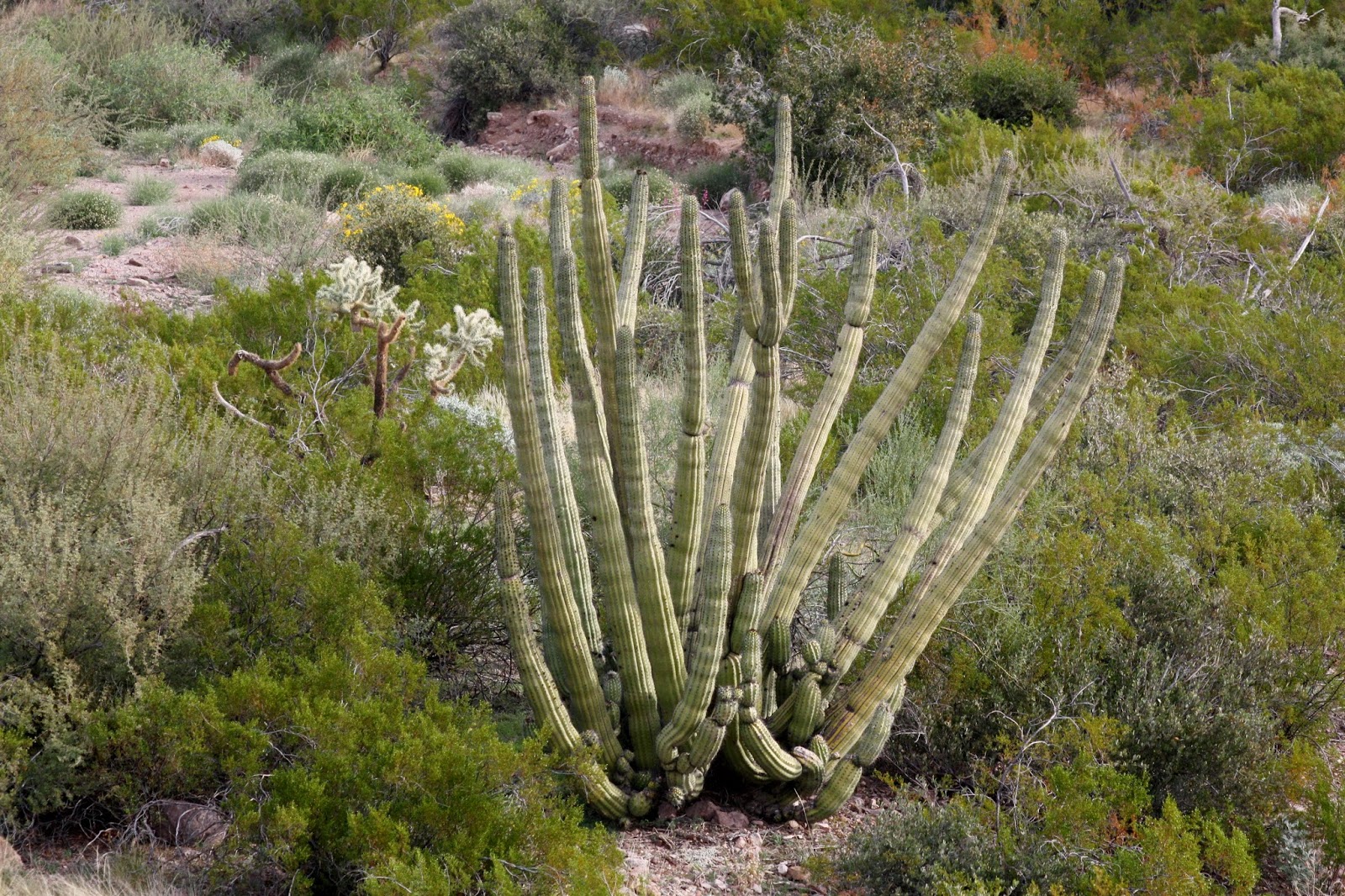There's no question that our positive experience was enhanced by two top notch guides, in addition to Susan Cross, our Western Parks organizer. Guide one was author and historian Bill Broyles, who literally has written the book on Organ Pipe. Check it out at ISBN 1-877856-69-X
http://www.amazon.com/gp/product/187785669X/ref=olp_product_details?ie=UTF8&me=&seller=
Guide #2 was retired Organ Pipe ranger, Caroline Wilson.

Both were accessible, personable, and above all knowledgeable.
Our two day excursion began in Tucson where we boarded our coach and headed west on historic Hwy 86.
We stopped briefly at the restored stage stop at Three Points (Robles Ranch Junction). For a bit more history of that spot check out http://www.azplanning.org/newsltr/June%202002.pdf
A bit later we drove past Kitt Peak and its famous Observatory.

Lunch found us in Sells, AZ, where the Desert Rain Café served up local delights including my pork ribs, beans, and salad.
Then it was on to the Tohono O'odham Cultural Center and Museum.

Just before we left, our bus driver Paul, offered to snap a shot of Jan and me in front of an intricate fence constructed entirely of mesquite logs.
Later that afternoon we pulled into Ajo and the La Siesta motel.
The Center was located on this site because of the views of Baboquivari Peak, which is sacred to the tribe. A cave atop the mountain is home to I'itoli, their Creator and Elder Brother. See more here about that story. http://climbing.about.com/od/mountainclimbing/a/Facts-About-Baboquivari-Peak.htm
At the center we listened to a number of presentations on tribal history and Native American crafts. Joe Joaquin, a Korean War hero and tribal elder made some fascinating comments about the continued efforts to repatriate both land and tribal artifacts.

Later that afternoon we pulled into Ajo and the La Siesta motel.
 |
| Ajo is to some degree defined by its gigantic slag or tailing piles left behind by a now closed copper mine. |
Dinner was at the Estrella Diner, which proved to be more of an eclectic international restaurant than a diner. My wife had a salmon burger with delicious sweet potato fries. One of our table mates had a German bratwurst plate smothered with kraut, and I settled for a quesadilla with a tangy homemade salsa. There was also a nice wine list and a great selection of beers including a milk stout that I sampled to great satisfaction.
Bright and early the next morning we breakfasted at a real diner called Marcela's. Our group literally filled the place and it did take them a while to get everyone served, but no one walked away hungry. Each plate was stacked with French toast, eggs, sausage, and bacon.

Fully fortified we now headed for Organ Pipe itself.

Fully fortified we now headed for Organ Pipe itself.
We inspected our first Organ Pipe Cactus up close at the Visitor Center
Then, after some introductory remarks,
we piled into two ranger driven vans to navigate the 21 mile unpaved Ajo Mountain Drive. It would be a lie to say it was a comfortable ride, but there was something new beyond each bump.
We were treated to vistas that rolled on all the way to Mexico in the distance.
At another stop we got a thorough lecture on the Organ Pipe life cycle and its basic structure.

This guy listened intently but took no notes.

We saw some rare cactus Cristates (Crested) and even one nestled in the center of an Organ Pipe.
We also picked up some geology along the way. The lighter bands in the rock are tuff--a volcanic deposit in between other layers.


In now dry washes such as the one below early inhabitants may have planted crops along side of rivers that flowed more frequently than now.

And we got a view of an equally rare double natural arch.

A definite highlight came when Bill Broyles led us off-trail to one of those spots treasured by every plant and creature in the desert--an open water source. Incredibly the ponds are filled with marine life--even shrimp. How they survive through periods when the water dries completely up is one of those evolutionary miracles that makes the desert fascinating.

There were actually two little ponds. The lower one had actually been dammed at some point.
In sum a most enchanting and educational trip. Thanks again to the Western National Park Association for adding these opportunities to their already wide list of services. Check them out at http://www.wnpa.org/default_html.asp























